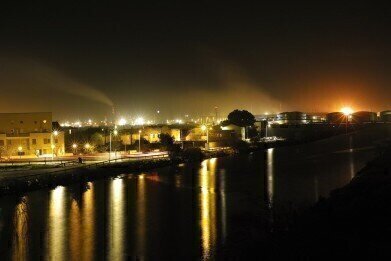Water/Wastewater
How Does Light Pollution Affect the Seafloor?
Aug 12 2020
A new study from the University of Plymouth has suggested that as much as three-quarters of marine habitats located near coastal cities could be negatively affected by light pollution. The report, which is the first of its kind, analysed the proliferation of red, green and blue lights from urban centres on the UK’s southern coastline to determine how they may affect the marine flora and fauna living there.
Given that many marine organisms rely upon the natural cues given by the sun and the moon, the interference of artificial light could play havoc with their ecosystems. However, the researchers behind the report stress that further work is needed to understand exactly how this light pollution may be interfering with their natural rhythms and the long-term impacts this may have on different species.
Manmade impacts
The detrimental impact of the human race on other species is well-documented. From hunting animals to extinction to the slow but apparently inexorable onset of climate change to the contamination of the planet with plastic pollution, man has not been beneficial for those with whom he shares the Earth. But one area of concern which is rarely afforded much attention is the impact of light pollution.
In order to address that shortfall, a team of scientists from the University of Plymouth studied the presence of artificial light in and around the Plymouth Sound and the Tamar Estuary. In particular, they concentrated their efforts on determining how much red, green and blue light was able to reach the seafloor in the aforementioned areas, using sophisticated mapping and radiative transfer modelling software to arrive at their results.
Conducted over four nights in 2018, the study showed that 76% of the seafloor was exposed to green light wavelengths, while 70% of the area studied received blue light wavelengths. Red light wavelengths penetrated to under 1% of the seafloor, but given that the white LEDs used to illuminate streets around Britain use a mixture of the three, more than three-quarters of the area studied were affected.
Uncertain impacts
The research revealed the full extent of an alarming and urgent issue facing our coastal marine populations. “The areas exposed here are not trivial,” explained Dr Thomas Davies, lead author on the paper. “Our results focused on a busy marine area and demonstrate the light from coastal urban centres is widespread across the sea surface, subsurface, and seafloor of adjacent marine habitats.”
“But Plymouth is still just one coastal city with a population of 240,000 people. 75% of the world's megacities are now located in coastal regions and coastal populations are projected to more than double by 2060. So, unless we take action now, it is clear that biologically important light pollution on the seafloor is likely to be globally widespread, increasing in intensity and extent, and putting marine habitats at risk."
The authors have called for more research to be conducted into the precise ramifications of so much light pollution, as part of a greater initiative geared towards a better understanding of the marine world. To that end, The Collaborative Centre for Sustainable Use of the Seas (CCSUS) was opened in July 2016, aiming to solve the biggest problems facing marine habitats today.
Events
Apr 24 2024 Sao Paulo, Brasil
May 05 2024 Seville, Spain
May 13 2024 Munich, Germany
May 23 2024 Beijing, China
May 23 2024 Beijing, China













